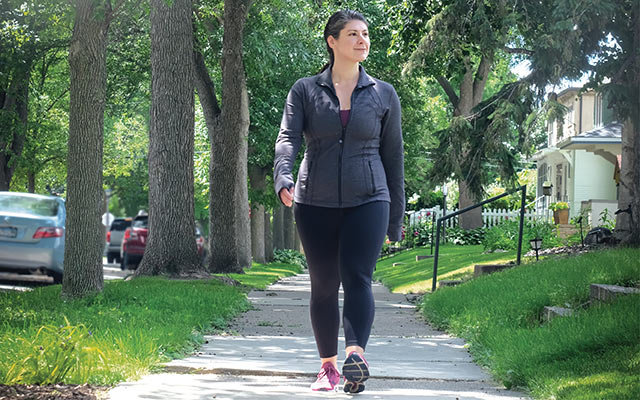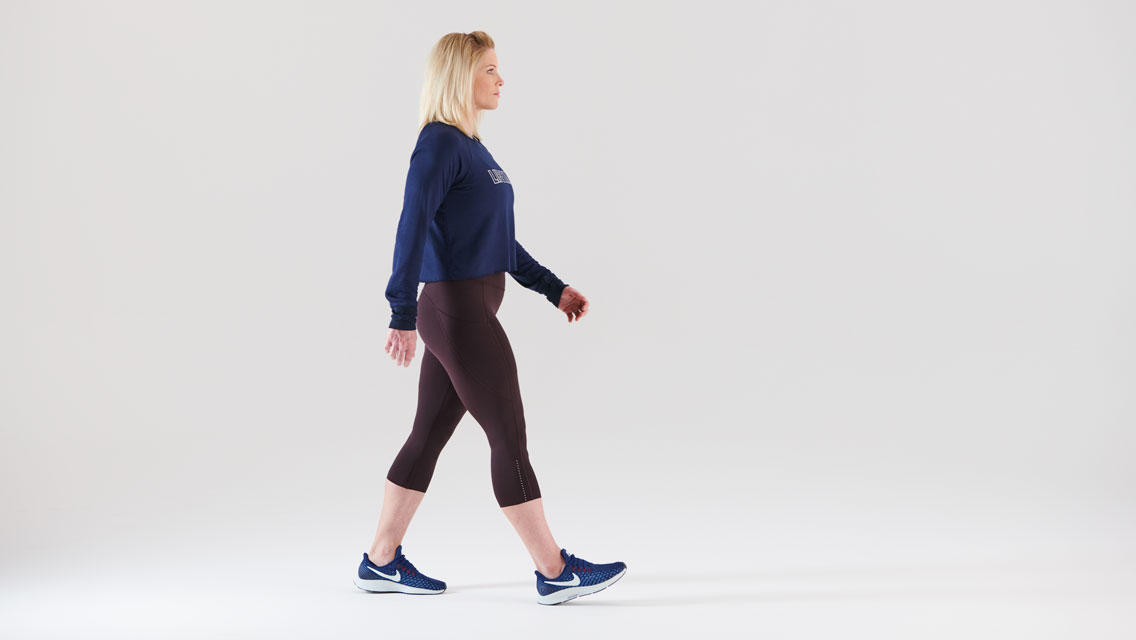300K in 30 Days. The Challenge popped into my inbox in early April. At the time, Minnesota was about three weeks into social-distancing rules that had many of us stuck at home, tossed into the deep end of a “new normal” dictated by the ill-understood novel coronavirus. This new normal meant no health clubs, no restaurants, no travel, no visiting friends and family — really not much of anything beyond the absolute essentials for the foreseeable future.
The Challenge arrived when I felt set adrift, internally treading water in an ocean of fear, loneliness, and general anxiety. I wanted nothing more than to curl up with my cats and hibernate, which my therapist explained was a reasonable coping mechanism — a survival response of dissociating and disconnecting.
The Challenge arrived when I desperately needed a way to ground myself, to find some purchase beneath my feet.
300K in 30 Days. In other words: Take 300,000 steps over the course of a month. The Challenge, issued by my coach to his training clients, was nothing crazy. Ten thousand steps a day — “but it sounds cooler to say 300K in 30,” my coach wrote.
“Walking is the most underrated exercise, stress reliever, and adventure-sparker there is,” he continued. “Take those leisurely steps and spend a couple hours walking. Or do a vigorous walk and try to raise your heart rate and break a sweat.”
The thought of having a goal that I could plan my days around — and having an end date at a time when there was no clear end to our new way of life — made me feel excited, even hopeful.
Adding a competitive element made it even more appealing: Challenge participants could enter their step count into a spreadsheet that would monitor the month’s goal.
I didn’t hesitate to sign up.
My ramp-up was slow: After I’d spent a few weeks mostly alone (cats notwithstanding), it felt strange to encounter other people who were also out and about — walking, running, bicycling.
My body, too, needed to acclimate. As I was coming off of winter, my average daily step count hovered around half of my new goal. I was fit from regular strength and interval-running workouts, but walking, I knew, was not as effortless as we make it out to be.
“Walking is a physical wonder and a feat of incredible neurological acrobatics,” Feldenkrais instructor Nick Strauss-Klein, GCFP, once told me during an interview. “Humans have the capacity to walk for miles or even tens of miles every day.” (For more on walking, see “Relearn to Walk.“)
I set out to walk with purpose, with intention, with awareness. I set out to walk not only to feel better, but to really feel. I knew from past experience that walking helped me move through my emotions and my thoughts, both of which I have a tendency to get mired in. And the physical release helped me with digestion and sleep, both of which have a tendency to get disrupted by anxiety.
After the first week, I settled into a routine. Almost every morning, I walked a loop that took me around a nearby golf course, just short of 5 miles. Some afternoons, I’d also take a shorter walk around my neighborhood.
Because it was April in Minnesota, I walked in sun and snow; I watched trees, bushes, and flowerbeds bloom to life; I observed how the light changed day-to-day as we crept closer to May; I got to know neighbors I’d never seen before — from a distance, of course.
I surpassed the somewhat arbitrary 300,000-step goal and realized that there’s no real magic in 10,000 steps — or in any other number, for that matter. As with everything in fitness, and, I suppose, in life, consistency is key.
Consistency and adaptability. I took an intuitive approach to my walks, listening to my body and mind. One day I barely walked 4,500 steps, while on another I hit nearly 22,000. One wasn’t “better” than the other; I just let each walk be what I needed it to be.
And while my fear, my loneliness, my anxiety didn’t suddenly disappear because I was walking, I no longer felt like I was on the verge of drowning.
Each step — each time I planted one foot and then the other on the earth — reminded me that I was still here. Passing others who were taking similar steps reminded me that it’s possible to be grounded and present even when faced with a grim reality. Walking gave me hope that I could keep moving, even as the future was uncertain.
It gave me hope that together, maybe, we can move through anything.




This Post Has One Comment
Thanks for this inspiration.